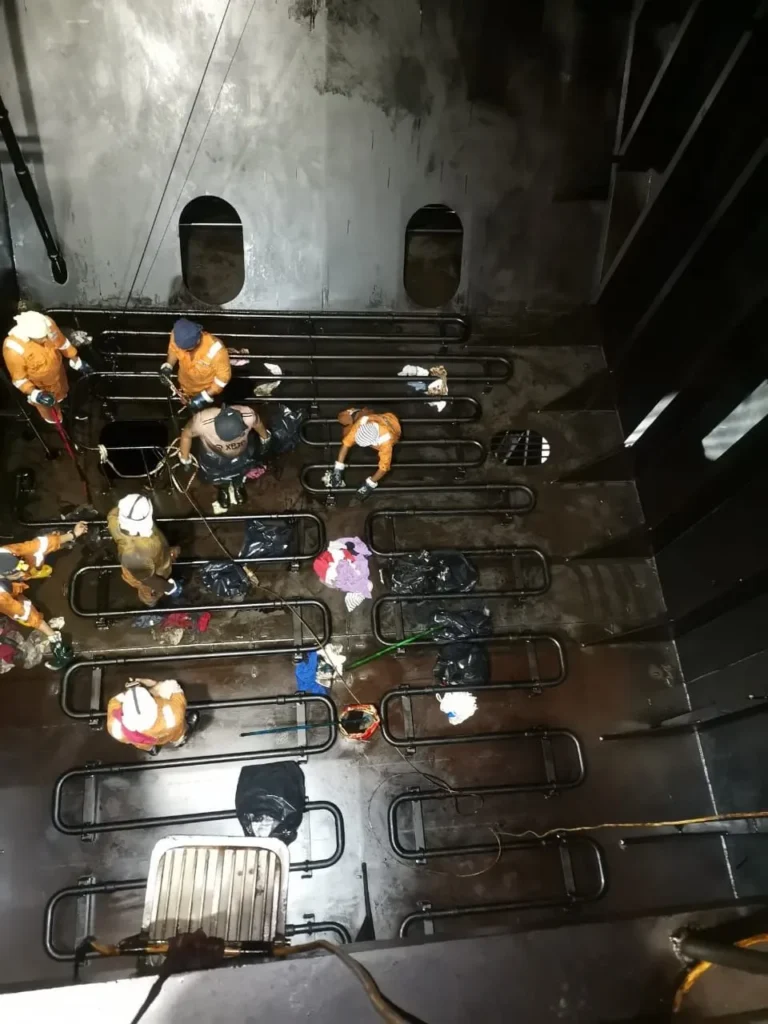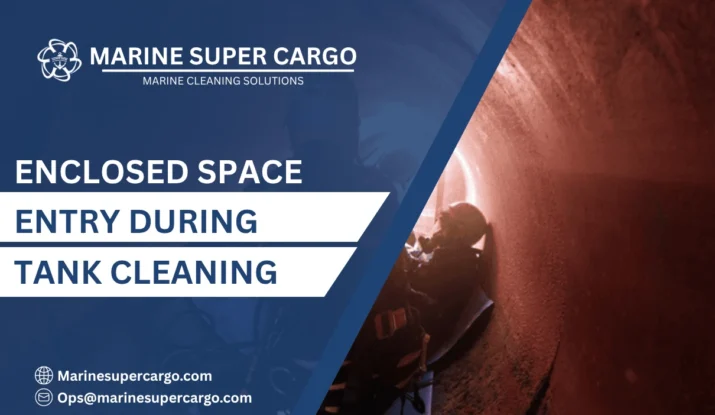Understanding Enclosed Space Entry During Tank Cleaning Risks
Enclosed space entry During Tank Cleaning represents one of the most hazardous operations aboard marine vessels. During tank cleaning, enclosed space entry becomes necessary for inspection, hand cleaning, or equipment maintenance. Each enclosed space entry carries significant risks including oxygen deficiency, toxic atmospheres, and physical hazards requiring strict protocols.
Marine Super Cargo prioritizes enclosed space entry During Tank Cleaning safety across all operations. Our comprehensive protocols align with IMO guidelines and MARPOL requirements, protecting crews during every enclosed space entry situation.
Pre-Entry Requirements for Enclosed Space Entry During Tank Cleaning
Permit to Work System
Before any enclosed space entry, establish a formal permit to work system. The enclosed space entry permit documents all safety checks, identifies responsible personnel, and authorizes specific timeframes for entry. Never commence enclosed space entry During Tank Cleaning without proper permit authorization signed by vessel’s Master or Chief Officer.
Atmospheric Testing Protocols
Atmospheric testing forms the foundation of safe enclosed space entry During Tank Cleaning. Test atmospheres at multiple levels within tanks—overhead, mid-height, and bottom plating near bilges. Enclosed space entry requires oxygen levels above 21%, hydrocarbon concentrations below 1% LEL, and absence of toxic gases.
Ventilation Requirements
Proper ventilation precedes every enclosed space entry During Tank Cleaning . Operate blowers continuously, creating positive airflow throughout tank spaces from bow to stern. Position ventilation ducting to reach all areas including corners near port and starboard frames.

Essential Equipment for Enclosed Space Entry
Personal Protective Equipment
Enclosed space entry During Tank Cleaning personnel must wear appropriate PPE including safety harnesses, helmets, and approved footwear. Equip every person entering with communication devices maintaining constant contact with topside watchkeepers. Portable gas detectors accompany personnel during enclosed space entry, providing continuous atmosphere monitoring.
Consider breathing apparatus availability even when initial testing shows safe conditions. Atmospheres can deteriorate rapidly during enclosed space entry, requiring immediate respiratory protection. Marine Super Cargo recommends breathing apparatus readily accessible at entry points during all enclosed space entry During Tank Cleaning operations.
Emergency Rescue Equipment
Position emergency rescue equipment at every enclosed space entry During Tank Cleaning point. Include breathing apparatus, rescue harnesses, and lifting equipment capable of extracting incapacitated personnel without entering the space. Never attempt rescue during enclosed space entry emergencies without proper equipment and additional support.
Enclosed Space Entry During Tank Cleaning Procedures During Tank Cleaning
Entry Authorization Process
Obtain formal authorization before enclosed space entry following pre-cleaning inspection checklist completion. Verify all isolation valves preventing inadvertent cargo transfer remain closed and locked. Confirm cleaning machines are secured and cannot activate during enclosed space entry
Continuous Monitoring Requirements
Maintain continuous atmospheric monitoring throughout enclosed space entry. Assign dedicated personnel monitoring conditions from outside, never relying solely on entrants’ portable detectors. Record readings at regular intervals documenting safe conditions persist during enclosed space entry.
Work Duration Limits
Limit enclosed space entry duration preventing fatigue and heat stress. Rotate personnel frequently, allowing adequate rest between entries. Consider tank temperatures—enclosed space entry in heated tanks requires shorter work periods and more frequent breaks.
Specific Hazards During Tank Cleaning Enclosed Space Entry
Oxygen Deficiency Risks
Oxygen deficiency represents the primary enclosed space entry During Tank Cleaning hazard. Cargo residues, rust, or bacterial growth consume oxygen creating lethal atmospheres. Even brief enclosed space entry into oxygen-deficient environments causes immediate unconsciousness without warning.
Toxic Gas Exposure
Previous cargo types determine toxic gas risks during enclosed space entry. Chemical residues release harmful vapors even after apparent cleaning completion. Hydrogen sulfide, benzene, and other toxic substances accumulate in poorly ventilated areas creating deadly conditions during enclosed space entry.
Physical Hazards
Enclosed space entry exposes personnel to physical dangers including slippery surfaces, sharp edges, and restricted egress routes. Tank structures feature numerous projections, ladders, and equipment creating trip and fall hazards during enclosed space entry.
Regulatory Requirements for Enclosed Space Entry
IMO Guidelines
IMO Resolution A.1050(27) establishes international standards for enclosed space entry aboard vessels. These guidelines mandate risk assessment, atmospheric testing, and emergency procedures before any enclosed space entry. Compliance with IMO enclosed space entry standards protects crews and demonstrates due diligence.
Vessels must maintain enclosed space entry procedures within safety management systems. Regular training ensures crews understand enclosed space entry risks and proper protocols per STCW requirements.
MARPOL Compliance
While MARPOL primarily addresses pollution prevention, enclosed space entry during tank cleaning operations must consider environmental protection. Ensure enclosed space entry procedures prevent accidental discharges and maintain proper waste handling throughout operations.
Marine Super Cargo integrates environmental considerations into enclosed space entry protocols, ensuring operations meet both safety and regulatory requirements simultaneously.
Emergency Response for Enclosed Space Entry Incidents
Establish clear emergency procedures before any enclosed space entry. Designate rescue team members and ensure they understand their roles. Never allow untrained personnel attempting enclosed space entry rescue without proper equipment and support.
FAQs About Enclosed Space Entry Safety
Q1: How often should atmospheric testing occur during enclosed space entry?
Initial testing occurs immediately before enclosed space entry, with continuous monitoring throughout operations. Formal re-testing should occur every 30 minutes minimum, or immediately if conditions change or personnel report concerns during enclosed space entry.
Q2: Can enclosed space entry proceed if oxygen levels are 20.5%?
No, enclosed space entry requires minimum 21% oxygen levels. Any reading below this threshold prohibits entry until ventilation raises oxygen to safe levels and maintains them throughout enclosed space entry operations.
Q3: Who can authorize enclosed space entry permits?
Only the Master or Chief Officer should authorize enclosed space entry permits after verifying all safety requirements. Junior officers may prepare documentation, but final authorization requires senior officer approval for every enclosed space entry.
Q4: Is standby person required for all enclosed space entry?
Yes, dedicated standby personnel maintaining constant communication with entrants are mandatory for every enclosed space entry. Standby persons must remain outside, ready to activate emergency procedures if enclosed space entry incidents occur.


